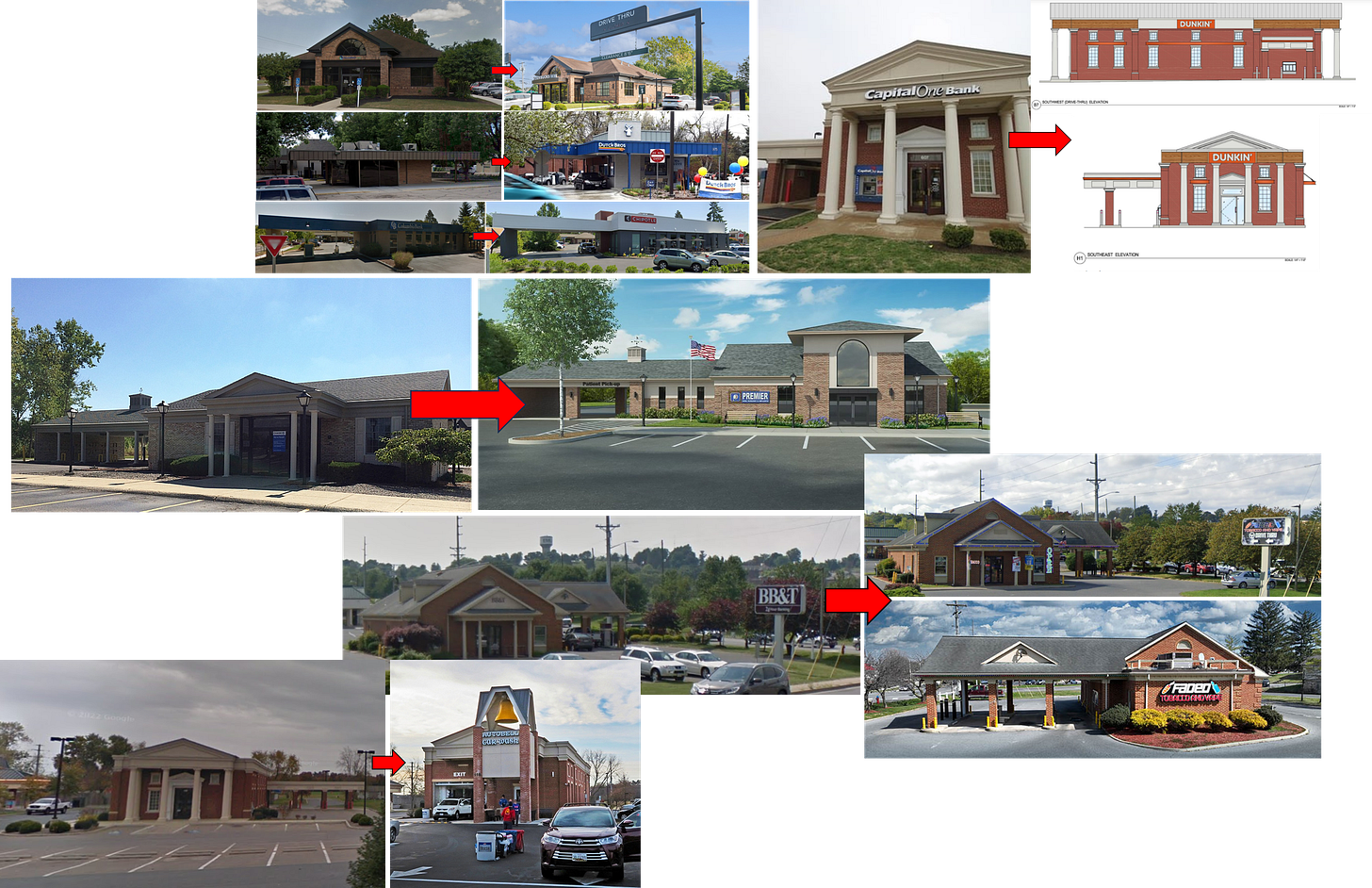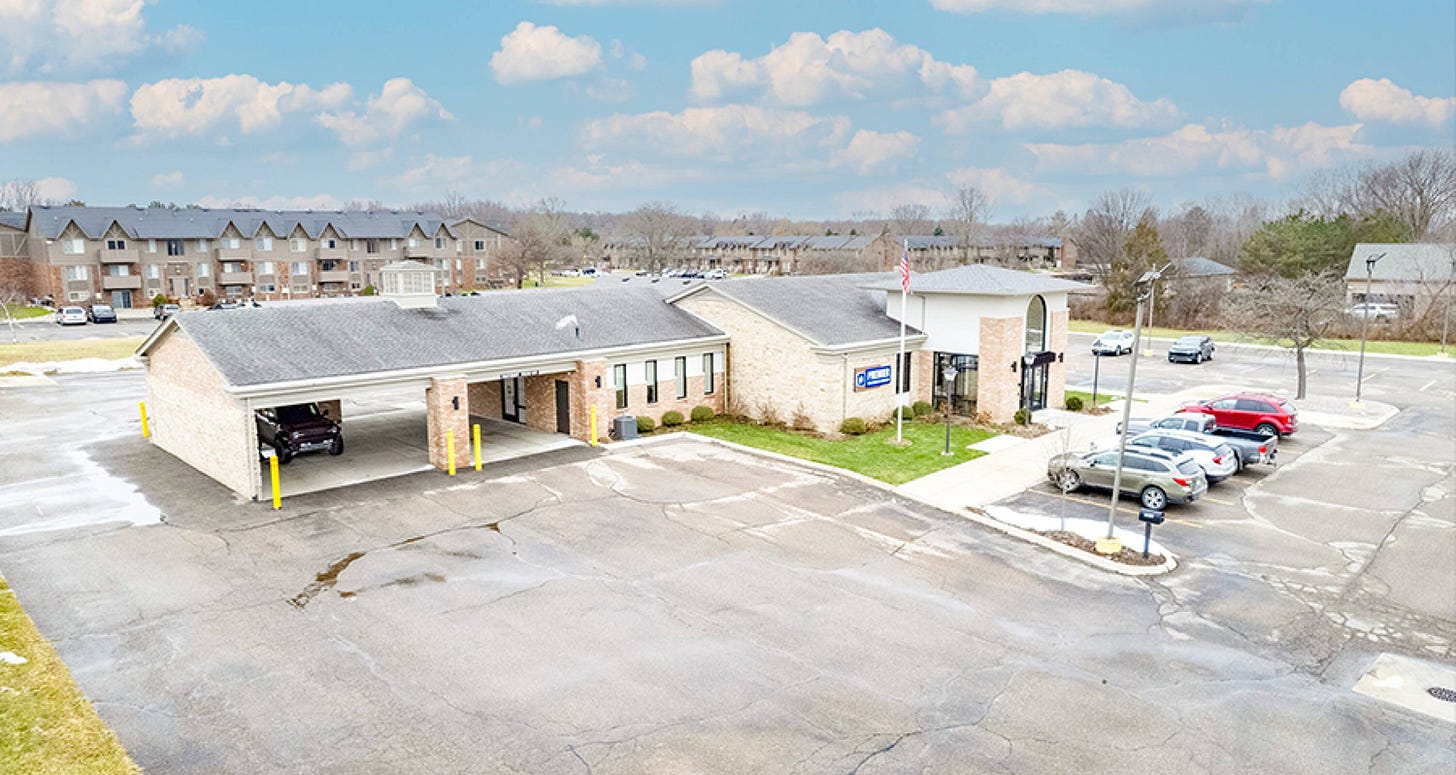The Number of U.S. Bank Branches Is Shrinking -- What Are Adaptive Reuse Options For The Real Estate?
~25,000 bank branches have closed over the past 15 years including several hundred just in the first quarter of 2025; how might the real estate be repurposed?
There are ~75,000 bank branches in the U.S.
While that may seem like a lot, it is down from about 100,000 just 15 years ago.
And the number of bank branch closures continues to accelerate:
Over 320 U.S. bank branches were marked for closure in the first quarter of 2025 with three institutions — Flagstar, Wells Fargo and U.S. Bank — accounting for half of these proposed closures.
Banks in the U.S. have invested heavily in their online and digital platforms and industry consolidation has rendered many branches superfluous.
As a result many banks are reducing their physical footprints.
That means a lot of shuttered bank branches — but not necessarily long term vacancy.
That is because there has been significant demand for the real estate — including adaptive reuses of the former bank space into restaurants, retail, medical offices — and even car wash units!
Perhaps the most common adaptive reuse of a former bank branch?
A quick service restaurant (QSR).
The conversion from bank to QSR makes sense:
Both are often located on high traffic streets and in 1,500 - 3,000 square foot buildings that include drive thru windows.
Plus QSR chains are rapidly expanding:
There are expected to be close to 4,300 new QSR restaurant openings in 2025 (which, incidentally, is nearly double the number of U.S. bank branches that closed in 2024).
Even some of the largest QSR chains — like Starbucks SBUX 0.00%↑, Dutch Bros BROS 0.00%↑, and Chipotle CMG 0.00%↑ have repurposed former bank branches.
Like QSRs, other users of vacant bank branches have also repurposed both the building and drive thru area.
Some retailers have incorporated the drive thru as a convenience feature in their adaptive reuse plans.
Like this conversion of a BB&T branch in Virginia to Faded Tobacco and Vape.
The vape shop not only converted the bank’s office area into a retail store but it also repurposed the drive thru for customer use.
Another increasingly common reuse of a former bank branch?
As medical office space.
Such as this former Chase Bank branch in Grand Blanc, Michigan that was repurposed for Premier Oral Surgery & Implants PLC.
The ~3,500 square foot building is now home to 4 oral surgeons that provide maxillofacial and oral surgical care.
Even the drive thru area was retained as a covered drop-off and pick up area — and a side entrance was added to the building to shield patients from the elements.
Some repurposes of bank branches are more unique and unconventional.
After all, it i snot common to come across a bank-to-car wash conversion.
But that is the adaptive reuse that Autobell Car Wash completed in Chester, Maryland.
Autobell reduced the building coverage on the ~2 acre site by demolishing the bank branch’s drive thru area.
But it retained much of the remaining ~3,700 square foot building that was built for Chevy Chase Bank in 2007.
Even if the repurpose of the vacant bank branch brought with it some unique challenges:
Like the need to dismantle and remove the bank's vault and 1,800 pound door!
Which brings us to one of the most challenging issues in repurposing a former bank branch:
What to do with the vault.
Removing the vault is usually quite costly — so much so that some users of former bank branches have incorporated it into the adaptive reuse of the building.
For instance, the former Noel State Bank Building in the Chicago neighborhood of Wicker Park was built in 1919 and home to many banks for over 80 years.
After a period of vacancy, the multi-story, Classical Revival-style building was repurposed as a Walgreens drugstore in 2012.
But Walgreens did not tackle the difficult and expensive process to remove the basement vault.
Instead Walgreens incorporated the space in its adaptive reuse plan.
The large door and locking gears of the former bank vault were maintained and the interior space was converted into a sales area and branded as the "Vitamin Vault."
Walgreens, however, vacated the former bank building after its lease expired in 2023.
This time, though, the former bank-turned-drugstore space did not remain vacant for long:
Barnes & Noble repurposed the space as a bookstore and moved in one year later.
Unlike most Barnes & Noble stores, the ~16,000 square foot space does not include a cafe.
But perhaps the Company is not yet finished with the adaptive reuse — as Barnes & Noble is not currently utilizing the former basement "Vitamin Vault."
The vault area was not renovated in the transition from drugstore-to-bookstore and the vault area is not open to the public.
At least for now.













